Hadn't spent much time in Millcreek since the Christmas avy cycle and wanted to get a handle on what avalanched. Travel was up the Bowman trail in Millcreek, Yellow Jacket, Toots to Boots into Alexander Basin, Depth Hoar Bowl, and the exit out Bonus Bowl into Wilson Fork. Toots to Boots had avalanched, most likely midway through the Christmas cycle, Mark performed a ECT in the skiers left side starting zone that had not slid, profile included. Depth Hoar Bowl had avalanched wall to wall, and a few of the lower roll overs also avalanched, also looked like most of the NW facing paths off the top of Wilson had avalanched into Alexander Basin, as well as most of Bonus Bowl. Probing the snow in Depth Hoar Bowl revealed that most of the facts in the basement had been destroyed, with only a thin veneer of snow left in the upper starting zone, and fairly stout debris in the bottom.
Photos: ECT in Toots, looking down Toots, in and out low lying clouds, and damp snow at about 8200ft
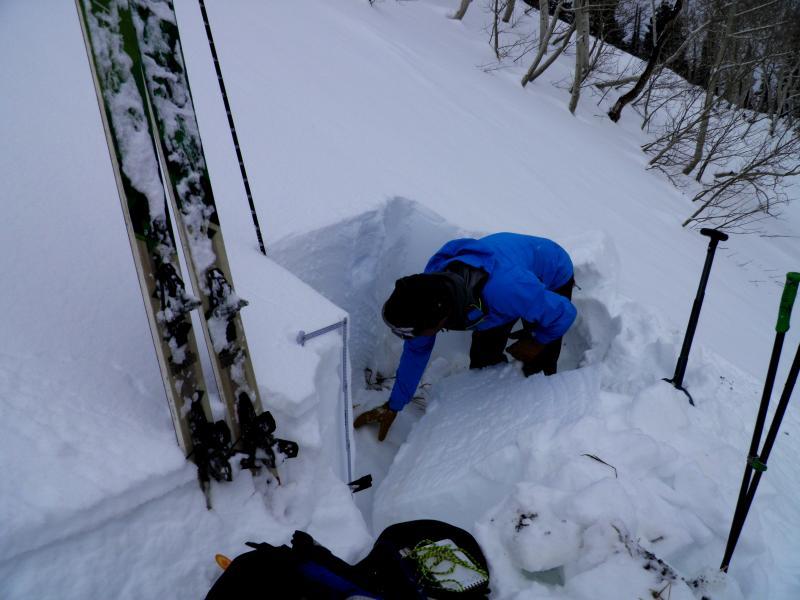
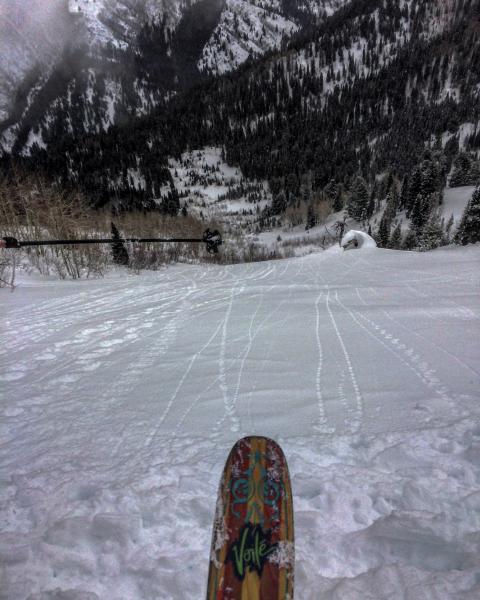
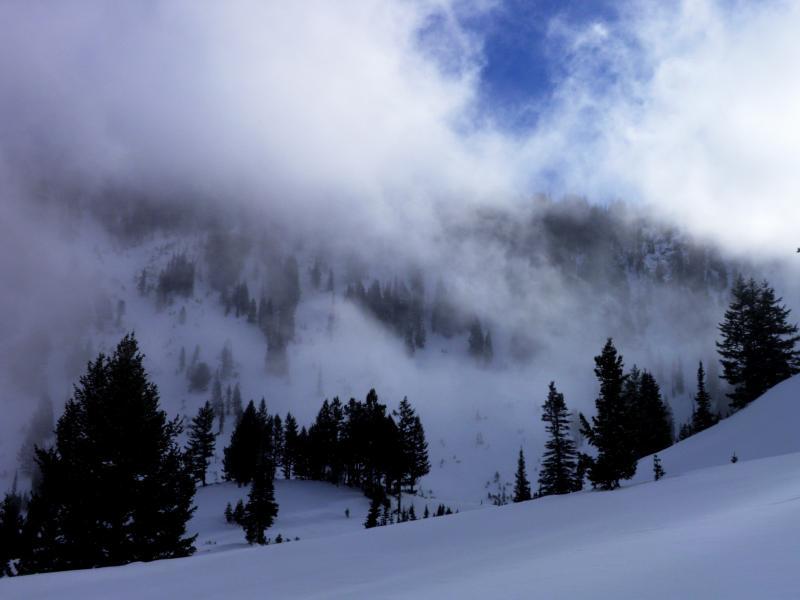
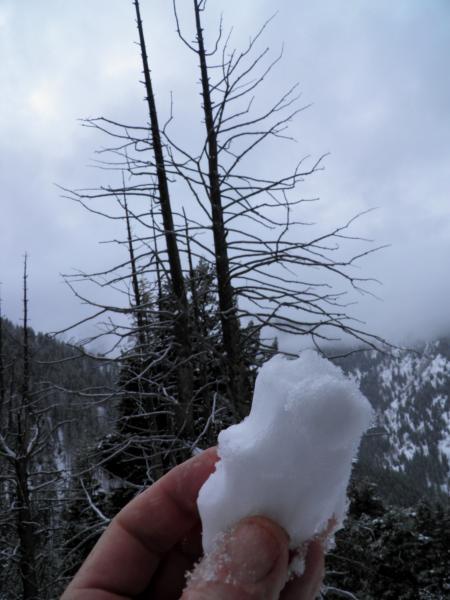
Staples comments:
Two pits around 9000 ft on ENE aspects. I think you can get a crack to propagate in the facets near the ground, but I think you will have a really hard time getting it started especially in places w/o a heavy wind load. Until the balance of stress vs strength is altered by new snow, triggering a deep slab will be difficult but not out of the question.
This first ECT had a very rough fracture surface. The fact that it propagated is more important, but the uneven fracture surface is perhaps a sign that things are moving in the right direction??? I'm not sure.

The next pit had a much cleaner fracture surface because it broke on facets above an ice crust. What was interesting here is that just 5 feet to the south, the ECT would not propagate and snow depth was only 5 cm deeper. I think part of this is a result of irregular snow cover in November and early December. Either way an ECTP is a red flag, but getting more and more ECTN's is a sign that we're moving in the right direction (ie-these facets are getting stronger and healing). Also, these two different results are not random variation in the tests. The snowpack felt very different as I was shoveling from one place to the other - that's why I dug and extra wide snowpit

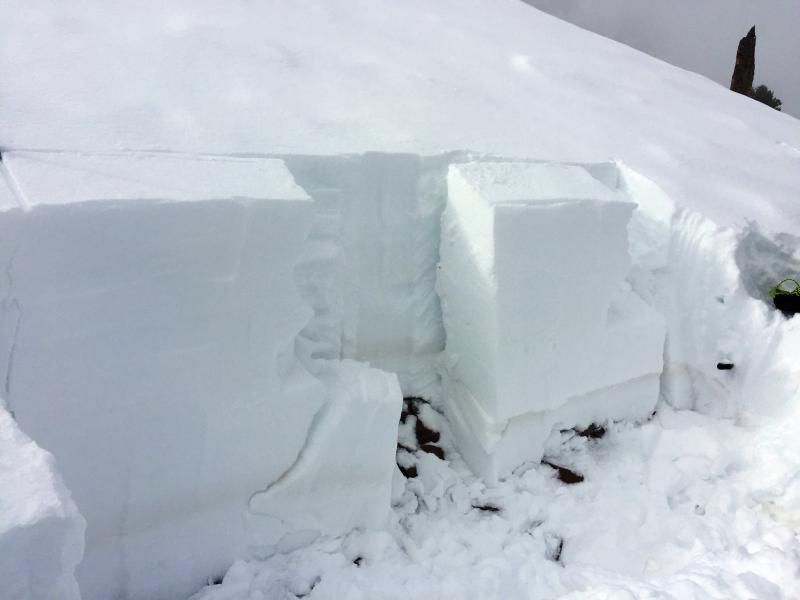
Thinking low in most terrain, maybe stick with moderate in upper elevation, steep rocky, wind loaded terrain.






